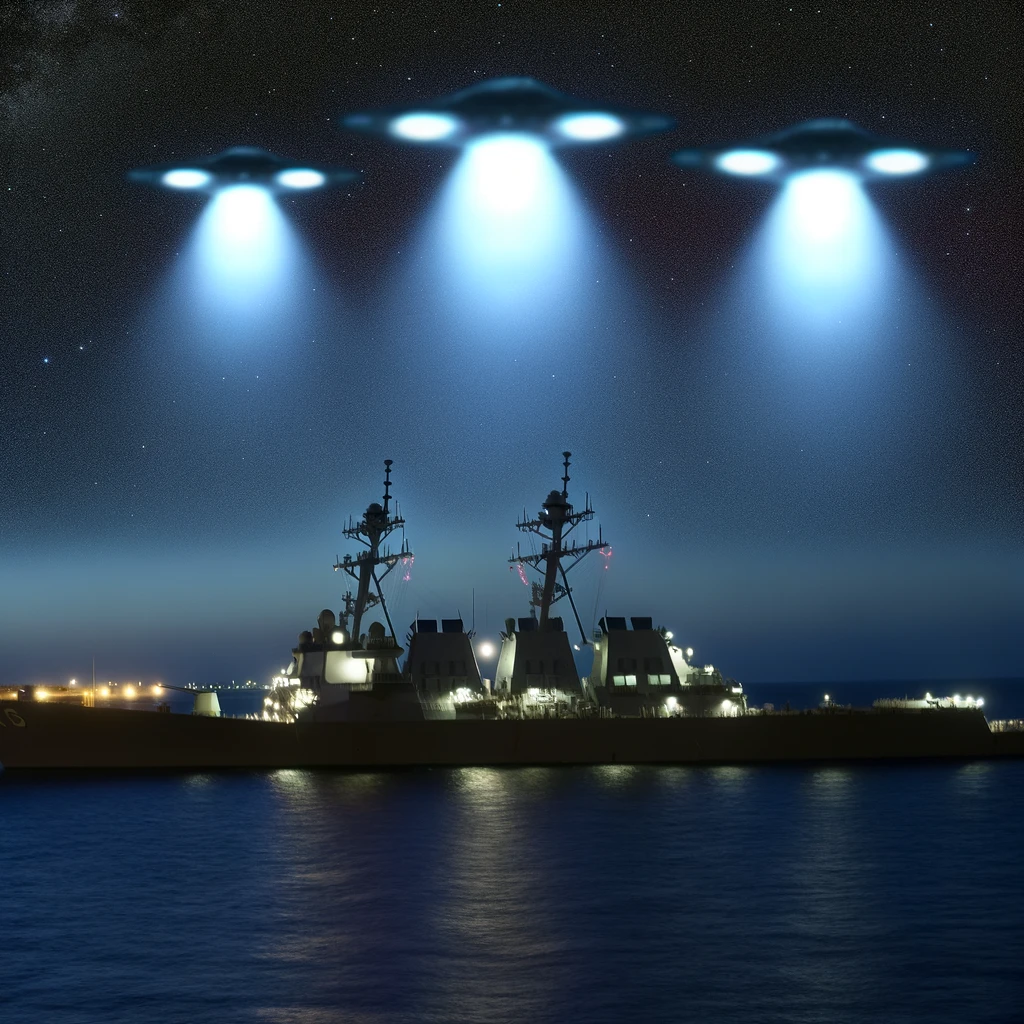170411ZJUL19 INTERACTION WITH UNK UAS RSL 001 UNCLASS Incident (2019)

The title of the video is in a format of a military messages or reports, commonly used in communications within the military and between ships, aircraft, and command centers.
This is also known as the USS Russell incident. Here’s a breakdown of what each part of the message represents:
- 170411ZJUL19: This part appears to be a date-time group (DTG), which is a standard format used by NATO and the US military for expressing date and time. It can be broken down as follows:
- 17: The day of the month.
- 0411Z: The time in Coordinated Universal Time (UTC), also known as Zulu time. In this case, it’s 04:11 AM.
- JUL: The month, July.
- 19: The year, 2019.
- INTERACTION WITH UNK UAS: This part of the title describes the nature of the report or event. “UNK UAS” stands for “Unknown Unmanned Aerial System.” This suggests the report is about an encounter or interaction with an unidentified drone or UAV (Unmanned Aerial Vehicle).
- UNCLASS: This is an abbreviation for “Unclassified,” indicating the security classification of the message. In this context, it means the information contained in the report is not considered sensitive and can be shared without restriction within the military or with authorized personnel.
This report originates from the Snoopy Team leader aboard the USS Russell, currently positioned at latitude 32.17 North and longitude 119.57 West, within the Southern California operational area, designated as “Hamburger.” The vessel is proceeding on a course of 270 degrees true at a speed of 5 knots. At precisely 0424 Zulu time, the team observed four unidentified drones, although their exact course and intentions remained unclear. These unidentified aerial contacts were operating within a close proximity of a thousand yards from the USS Russell. At the time of reporting, the drones’ tail numbers could not be identified, adding to the uncertainty of the situation.
The USS Russell is a United States Navy Arleigh Burke-class guided-missile destroyer, renowned for its advanced multi-mission capabilities. Equipped with the Aegis Combat System, it is designed to engage in a wide range of operations, from peacetime presence and crisis management to sea control and power projection. The USS Russell is capable of operating independently or as part of carrier strike groups, surface action groups, and amphibious readiness groups. Its arsenal includes Tomahawk missiles for precision long-range strikes, Standard Missiles for airborne threats, and Harpoon missile systems for anti-ship warfare. Additionally, it boasts sophisticated anti-submarine capabilities, including torpedoes and an advanced sonar system, making it a formidable presence in any maritime theater.
The SNOOPIE Team in the U.S. Navy, an acronym for Ship’s Nautical Or Otherwise Photographic Interpretation and Examination, plays a crucial role in information gathering and security. When called into action, this team’s primary task takes precedence over all others. Comprising sailors skilled in photography and videography, the SNOOPIE Team is tasked with documenting surface and air contacts that approach a Navy vessel closely. The team’s objective is to quickly and accurately collect visual data to assess whether these contacts pose a threat or are benign. This information is vital for the Tactical Actions Officer and the Officer of the Deck to make informed decisions regarding the ship’s safety and operational response. The rapid collection, analysis, and dissemination of this visual intelligence underscore the Navy’s readiness to respond to potential threats and maintain maritime security.
Visual intelligence collected by the SNOOPIE Team can provide specific details about a contact, such as the flag it flies, the visible weapons systems onboard, and the personnel’s activities, which might not be discernible through electronic sensors alone. This human element in intelligence gathering is crucial for understanding the intentions and capabilities of nearby vessels or aircraft, enhancing the ship’s situational awareness, and informing command decisions. In essence, the SNOOPIE Team’s work complements the technical capabilities of ships like the USS Russell by providing a level of granularity and context that is best achieved through human observation and interpretation.
The claim that a SNOOPIE Team might have identified objects as “out of focus stars, specifically Altair and Tarazed,” touches upon the challenges faced in the accurate identification of aerial or surface contacts, especially under conditions of limited visibility or with equipment that may not be optimally focused. In the context of naval operations, especially during night-time or in areas with complex backgrounds like the sea and sky, distinguishing between man-made objects and celestial bodies can be particularly challenging.
Stars like Altair and Tarazed, being bright and prominent in the night sky, could potentially be mistaken for unidentified aerial objects if the observing equipment is not correctly focused or if the observers are not adequately trained to differentiate between celestial and terrestrial objects. This scenario underscores the importance of having well-trained personnel in the SNOOPIE Team, equipped with not only the technical means for capturing high-quality visual data but also the analytical skills to accurately interpret these observations. It also highlights the need for a combination of human observation and technical sensor data to cross-verify and validate the nature of observed objects, ensuring that the assessments made are as accurate as possible.
There is evidence that the objects were detected by sensors other than the SNOOPIE team. The U.S. Navy has released footage and information indicating that these unidentified aerial phenomena (UAP) were indeed picked up by advanced sensors. The footage and sensor data related to these encounters have been part of ongoing investigations and discussions within the U.S. military and government circles. These sensors are part of sophisticated surveillance and reconnaissance systems used by the military to monitor airspace activity, and their detections lend credence to the observations reported by pilots and personnel.

